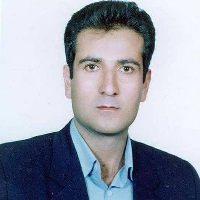Effect of Long Term Rice Cultivation on Potassium Status, Clay Mineralogy and Some Physicochemical Properties of Calcareous Soils in Fars Province
Author(s):
Article Type:
Research/Original Article (دارای رتبه معتبر)
Abstract:
The present study was performed to investigate and compare some physico- chemical properties, clay mineralogy and different forms of potassium (K) of paddy soils with non-paddy soils and to study the effect of waterlogging on soil pedogenesis in some important paddy areas in Fars province. For this investigation, a paddy and non-paddy soil pedons within each area with similar calcareous parent materials and landform were dug and some soil properties and different forms of K in surface and subsurface soils were determined. The results showed that the average contents of soluble, exchangeable, HNO3-extractable, structural and total K in the non-paddy soils were 3.5, 199, 864, 4635 and 5502 mg kg-1; and in the paddy soils were 2.5, 164, 742, 5346 and 6088 mg kg-1, respectively. Results also indicated that the paddy soils had lower contents of soluble, exchangeable and non-exchangeable K due to the K leaching by irrigation water and removal by plant uptake. Significant correlations were found between different forms of K and some soil properties like clay, CEC and OC. The results of clay mineralogy indicated similar minerals, including smectite, illite, chlorite, palygorskite, vermiculite and kaolinite but with different relative abundance. Long-term rice cultivation seems to affect only the amount of clay minerals and converts illite and palygorskite to smectite. Significantly possitive correlations were found between non-exchangeable, mineral and total K with illite content in the clay fraction.
Keywords:
Language:
Persian
Published:
Iranian Journal of Soil and Water Research, Volume:52 Issue: 1, 2021
Pages:
123 to 141
https://magiran.com/p2303775
مقالات دیگری از این نویسنده (گان)
-
Evaluating the Precision of the Conditioned Latin Hypercube Sampling Method for Selecting Soil Samples to Generate Digital Maps of Soil Properties
Z. Mosleh Ghahfarokhi *, A. Azadi
Journal of water and soil, -
Landforms and soil order influence on the distribution and behavior of some soil micronutrients in several intermountain plains in southwestern Iran
*,
Iran Agricultural Research, Winter and Spring 2023 -
Evaluation of soil fertility map for bean cultivation in Eghlid Plain by using Hybrid Fuzzy-AHP and GIS techniques
Gholamreza Zareian *, ,
Iran Agricultural Research, Winter and Spring 2021



